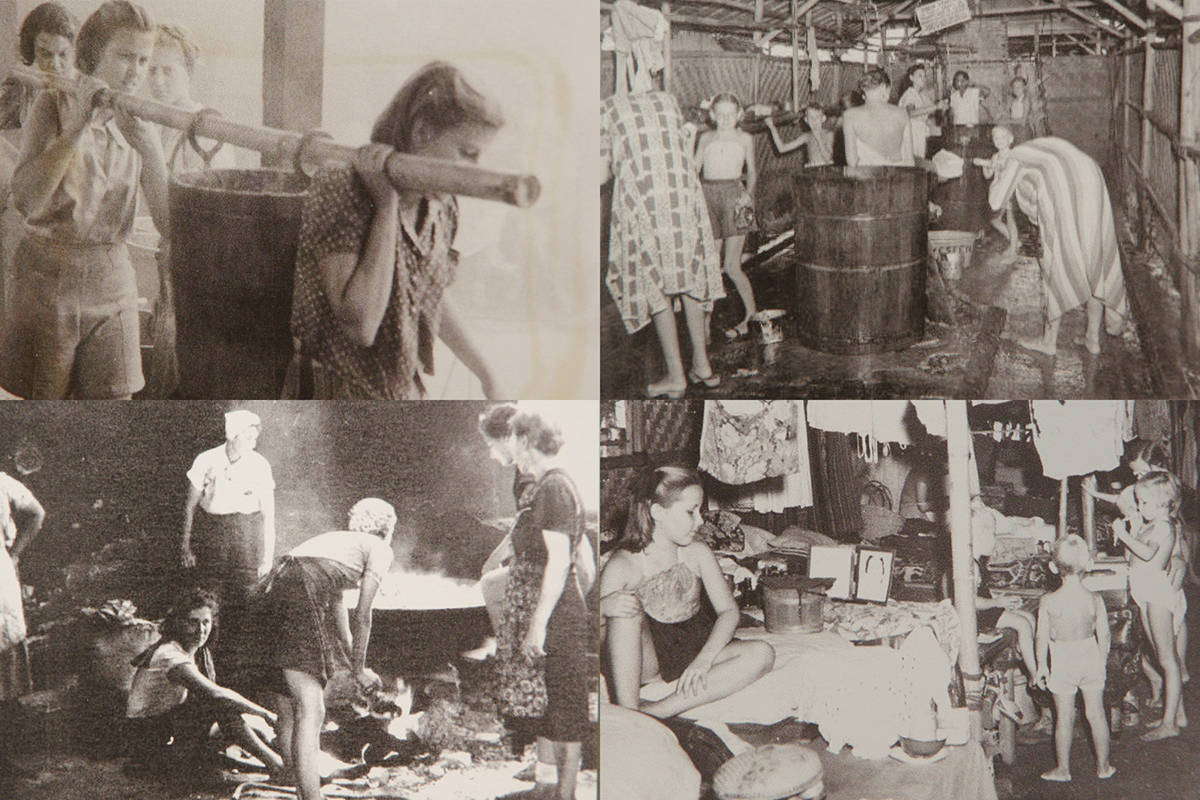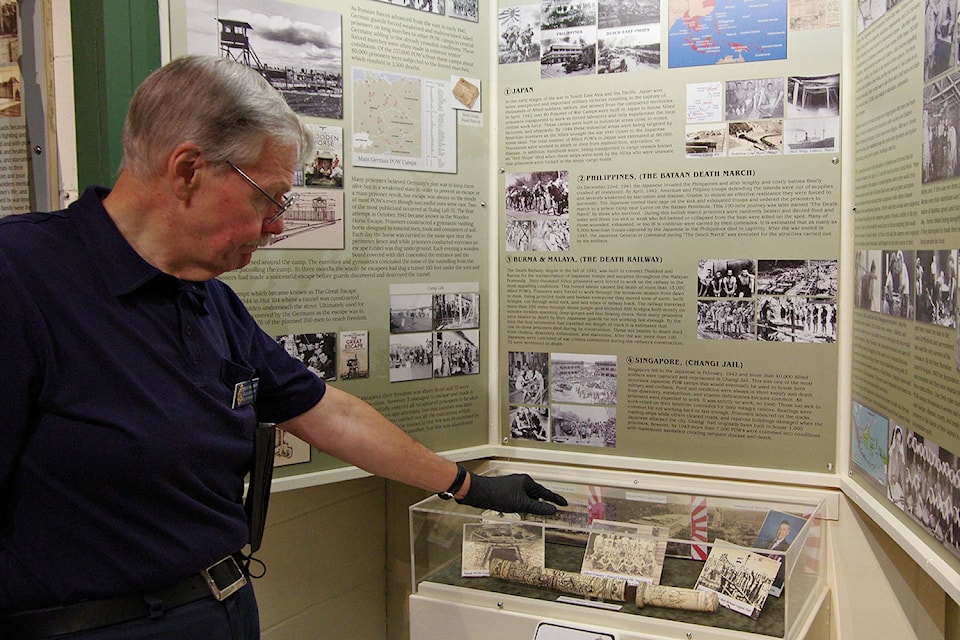When wars break out it’s not just captured armed combatants of warring nations who are sent to prison camps.
When Japan’s armed forces swept through Southeast Asia during the Second World War, numbers of prisoners captured were staggering and included nearly 200,000 British Commonwealth military personnel from Canada Australia, New Zealand and India. American and Philippine troops captured accounted for another 75,000 prisoners.
Also swept up were 130,000 civilians, most of them women and children from Allied nations, who were sent to prison camps in Indonesia.
Conditions in those camps were overcrowded, unsanitary and breeding grounds for dysentery, typhus, bedbugs, lice and scabies. Starvation, cruelty at the hands of their captors and exhaustion from overwork and battling disease and hunger claimed thousands of captives’ lives by the war’s end.
The stories and images of prisoners, combatant and civilian, in the First and Second World Wars are depicted in a new display at the Vancouver Island Military Museum.
READ ALSO: Nanaimo’s legion halls decide to close on Remembrance Day as a COVID-19 precaution
Brian McFadden, vice-president of the Vancouver Island Military Museum, relates one of the stories of an Australian nurse who survived an incident that became known as the Bangka Island Massacre and her years of incarceration.
When Singapore was attacked by Japan in 1942, Vivian Bullwinkel was on a small steamship with about 250 civilian men, women, children and wounded soldiers trying to flee to safety in Australia.
“They got as far as this area here between Sumatra and Java,” McFadden said, gesturing to a map of Indonesia. “The Japanese bombed the ship, machine-gunned the people in the water. The nurses and a bunch of wounded guys ended up on the beach. So the Japanese rounded them all up, separated the men, took them into the jungle and bayoneted them all to death. They told the women to line up and as they marched into the sea they machine-gunned all of them.”
Of the 22 nurses and 25 British soldiers who’d washed ashore on Bangka Island’s Radji Beach, only Bullwinkel survived. She was struck by a bullet that passed through her body, but missed vital organs. She managed to play dead until Japanese troops left the area more than a day later.
“After the Japanese left the beach, she crawled back up to the beach and found a wounded British soldier,” McFadden said.
Pte. Patrick Kingsley had crawled out of the jungle after being shot and bayonetted. Bullwinkel bandaged his injuries and her own and they survived, with help from local women who secretly brought food for 12 days.
Bullwinkel realized the only possible way they could survive was to turn themselves over to the Japanese who they feared would execute the village women who were helping them if they were caught.
Bullwinkel and Kingsley made their way to the town of Mentok and turned themselves in. Bullwinkel managed to hide her injury, fearing the Japanese would discover she was a witness to the massacre and execute her. Kingsley died of his injuries shortly after their arrival.
Bullwinkel spent the next three and a half years in Sumatra’s Palembang prison camp, one of the most notorious of the Japanese prison camps, where she was reunited with 24 other Australian nurses who had also survived the sinking, but were fortunate enough to make it ashore in another part of the island.
Bullwinkel kept her experience at Radji Beach a secret throughout the war until she was freed in 1945 and gave testimony about the massacre at the Tokyo war crimes trials, held from 1946 to 1948.
Bullwinkel’s is among the accounts of life in prison camps, including artifacts and photographs in Women Beyond the Wire, part of Vancouver Island Military Museum’s newest display about life for prisoners of war, conditions in POW camps and prisons and how they lived and died as slave labourers at the hands of their captors throughout Southeast Asia and Europe in the First and Second World Wars.
Vancouver Island Military Museum will be open Remembrance Day, Nov. 11. To learn more, visit http://vimms.ca.
READ ALSO: Nanaimo’s other First World War ace remembered
photos@nanaimobulletin.com
Like us on Facebook and follow us on Twitter

